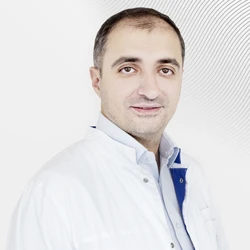Benign paroxysmal positional vertigo
Narrated by Ekaterina Dovlatova,
otorhinolaryngologist, otoneurologist-vestibulologist, PhD
Dizziness is one of the most common complaints among patients of any age. However, it can be a manifestation of various pathological conditions, from harmless and short-term to life-threatening. Naturally, each of these pathologies requires its own diagnostic and therapeutic approach. That is why it is so important to know the possible causes of dizziness and to determine in a timely manner which vertigo has occurred in a particular patient.
Types of vertigo
The sensations, which are often called dizziness, can be different: from a feeling of lightness in the head to a feeling of rotation of the surrounding space. Depending on what exactly is bothering the patient, systemic (true) and non-systemic vertigo are distinguished - these two types have completely different causes.
Systemic vertigo is a feeling of imaginary rotation or linear displacement of the surrounding space relative to one's own body or one's body in space. It is characteristic of damage to the vestibular analyzer, and in most cases its peripheral part, in particular, the inner ear.
Non-systemic vertigo combines symptoms:
- blurred head,
- concentration difficulty,
- balance disorder when walking,
- feeling of approaching loss of consciousness, etc.
These sensations are more often symptoms not of vestibular pathology, but of cardiovascular, endocrine, psychogenic, and some others. But, of course, there are exceptions to the rules that only a specialist can figure out.
True vertigo can occur when the inner ear, vestibulocachlear nerve, or some parts of the brain that are part of the vestibular system are affected. For this reason, sudden systemic dizziness requires immediate treatment by a specialist to rule out life-threatening conditions, such as acute cerebrovascular accident. However, according to statistics, the most common cause is not stroke, but benign paroxysmal positional vertigo (BPPH), which, according to various sources, accounts for about 25% of cases. Unfortunately, despite this prevalence, not all patients receive the correct diagnosis and effective treatment. Very often, "osteochondrosis" or "stroke" is mistakenly exposed, and the patient remains without proper treatment.
BPH can occur in any person, regardless of gender and age, but the peak incidence occurs at the age of 50-70 years, and women are affected almost twice as often as men. The "culprit" of this disease are otoliths - microscopic pebbles, crystals of calcium carbonate. Normally, everyone has them and they are located in the vestibule of the inner ear, forming part of the otolith receptor, which is responsible for the perception of linear acceleration. Sometimes, for various reasons, most of which are still unknown to science, these otoliths "fall out" of their place and enter another part of the inner ear - the semicircular canals - where they should not be. The semicircular channels are located in three mutually perpendicular planes, which allows us to respond to angular acceleration by turning and tilting our heads in different directions. The presence and movement of otoliths in one of the channels leads to a false sense of rotation in one plane or another. The posterior semicircular canal is most often affected (about 80% of cases of DPPH), less often the horizontal (10%), and extremely rarely the anterior (2%).
Symptoms of benign paroxysmal positional vertigo
Short-term attacks of systemic dizziness are a characteristic manifestation of DPPH. The main characteristics of seizures:
-
occur when the position of the head and/or body in space changes;
-
they last less than a minute (sometimes they may be longer);
-
does not occur at rest, nor is it accompanied by hearing, visual impairment, or headache.
For damage to the posterior semicircular canal, the most provocative are tilting or tilting the head down, getting out of bed or, conversely, laying down; for the horizontal semicircular canal, turns from side to side in the prone position. Attacks of dizziness may be accompanied by nausea, less often by vomiting, especially at the very beginning of the disease. In addition, various vegetative manifestations may develop during attacks of dizziness: changes in pulse, blood pressure, pallor, sweating and/ or a feeling of heat. Over time, the symptoms of DPPH become less pronounced under the influence of the central nervous system, but they do not completely disappear while the otoliths are in the semicircular canal.
Diagnosis of BPH
Special diagnostic positional maneuvers are required to diagnose DPP, the most famous of which is the Dix-Hallpike maneuver. During the maneuver, the doctor changes the patient's position so as to give the semicircular canal under study the desired position and determine whether there is otolith movement in it. When the semicircular canal is irritated by otoliths during a maneuver, in addition to the patient's sensations listed above, a characteristic nystagmal reaction occurs - then the maneuver is considered positive.
Nystagmus is an involuntary rhythmic movement of both eyes that a person usually does not feel. Each semicircular canal has its own nystagmus, which helps the doctor determine in which channel the pathological process has developed. Diagnostic maneuvers are performed on a regular couch. The combination of the maneuver, the nystagmal reaction that occurs, and the patient's sensations make it possible to confirm the diagnosis of DPPH. However, in the vast majority of cases, there is no need for an MRI scan of the brain or CT scan of the temporal bones - otoliths cannot be seen in this way anyway due to their size - neuroimaging methods may be needed in difficult cases.
Treatment of BPH
Various therapeutic positional maneuvers are used to treat BPPH. The choice of the desired manipulation depends on the affected semicircular canal and some of the patient's characteristics. A therapeutic maneuver, like a diagnostic one, is performed on the couch, and sometimes immediately after the last one. The essence of this procedure is that the doctor sequentially changes the position of the patient's head and body so that the otoliths move along a semicircular channel and eventually return back to the vestibule. If the necessary positional maneuver is performed correctly, its effectiveness is very high – about 60-80% of cases can be stopped at the first visit. In more complex cases, the doctor may recommend additional self-exercise at home before the next consultation. At the same time, no medications are usually required - only occasionally may symptomatic treatment be needed to reduce the intensity of symptoms, for example, to combat severe nausea or vomiting.
After recovery from DPPH, there are no consequences, which is why the disease is called benign. However, relapses often occur - somewhere in 40-50% of cases. Since the exact cause of the "loss" of otoliths in most cases is still not known, we cannot prevent the recurrence of this disease - there are no reliably working means of preventing recurrence. Therefore, the doctor usually does not recommend changing your lifestyle after recovery. In some cases, it may be necessary to rule out vitamin D deficiency. If a relapse does occur, do not panic - you should contact a specialist as soon as possible to perform positional maneuvers.
Why the EMC
The first and only clinic in Russia, created in the image of the world's leading clinics
EMC is a multidisciplinary center offering patients a high level of medical services and a personalized approach
Worldwide recognition and awards
 Learn more
Learn more
Worldwide recognition and awards
 Certificates and licenses
Certificates and licenses
Make an appointment for a consultation
Specify your contacts and we will contact you to clarify the details
Reviews
and new products of the EMC



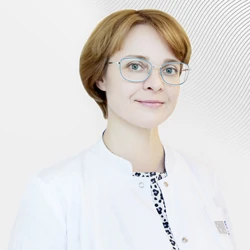

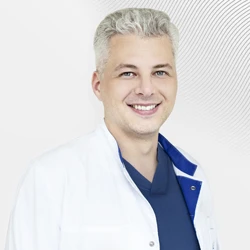

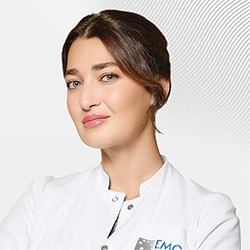
.webp)


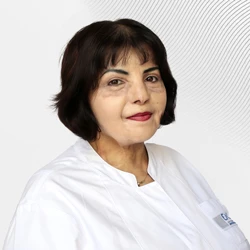

.webp)
